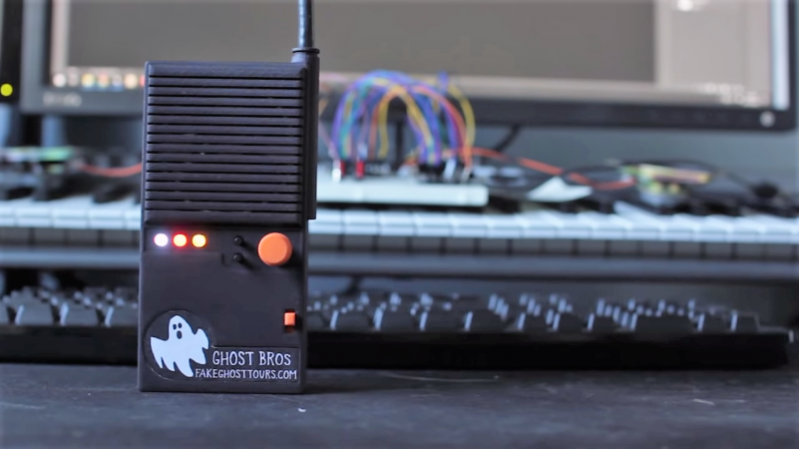Chances are good that a fair number of us have been roped into “one of those” projects before. You know the type: vague specs, limited budget, and of course they need it yesterday. But you know 3D-printers and Raspberduinos and whatnot; surely you can wizard something together quickly. Pretty please?
He might not have been quite that constrained, but when [Sean Hodgins] got tapped to help a friend out with an unusual project, rapid prototyping skills helped him create this GPS-enabled faux-walkie talkie audio player. It’s an unusual device with an unusual purpose: a comedic walking tour of Vancouver “haunted houses” where his friend’s funny ghost stories are prompted by location. The hardware to support this is based around [Sean]’s useful HCC module, an Arduino-compatible development board. With a GPS module for localization and a VS1053 codec, SD card reader, and a small power amp for the audio end, the device can recognize when the user is within 50 meters of a location and play the right audio clip. The housing is a 3D-printed replica of an old toy walkie-talkie, complete with non-functional rubber ducky antenna.
[Sean]’s build looks great and does the job, although we don’t get to hear any of the funny stuff in the video below; guess we’ll have to head up to BC for that. That it only took two weeks start to finish is impressive, but watch out – once they know you’re a wizard, they’ll keep coming back.
















“Chances are good that a fair number of us have been roped into “one of those” projects before. You know the type: vague specs, limited budget, and of course they need it yesterday”….
Sounds like where I work… And about 90+% of all engineers.
Nice project!
Ha! I have done the same thing 8 years ago on ATmega32 with VLSI mp3 player, SD card, and an external GPS module. It was a device intended for location-based ads in public transportation buses :-)
>the device can recognize when the user is within 50 meters of a location and play the right audio clip.
”within 50 meters” is a very low resolution for walking. Also this won’t be too good for not missing the right timing for the effects – different walking speeds can mean 20-30 seconds timing difference. It also means that the houses have to be at least 100 meters apart for the device. The average North American might not enjoy that long walk.
May be something like an IR beacon would be more useful as it has a very limited range so that the effects are exactly on spot.
Its a walking tour, so we have to assume everyone is prepared to walk.
I would have figured he would just use filenames that were the gps coordinates to play the proper file rather than hard coding it
like 12.34567-89.01234.mp3
i would agree if he intended it as a more than one off project, but for something you don’t expect to maintain why even think about those re-usability tweaks?
and yes, i am a firm believer in “anything you make you’ll have to support even if it’s a one off project” but still makes some form of sense to me. maybe he’ll think of it when he is asked to add 3 more sound files 3 months from now